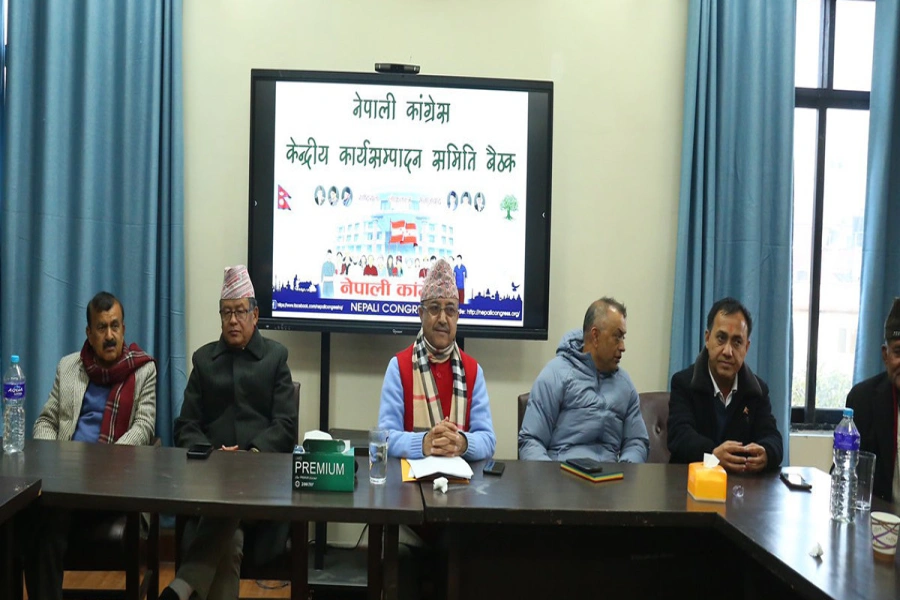We have functional governments from local to federal levels. But a number of operational fissures have started to appear on the surface over utilization of resources and powers
Nepal marked 11th Republic Day recently. Nepal has long been accustomed to ‘infant democracy’ as democracy did not get opportunity to bloom to its maturity in the past. The ‘infant democracy’ under constitutional monarchy witnessed various ups and downs. It is said middle class plays an important role in sustaining any political system. Did Nepal’s middle class play any role to nurture and flourish democracy? Did it even try? Did it learn any lessons from the debacle of democracy in 1960? These are important questions to ponder in democratic republic as well.
In his seminal 2003 book The Burden of Democracy, an Indian public intellectual who is currently vice-chancellor of Ashoka University and who is regarded as global expert on democracy, Pratap Bhanu Mehta has tried to focus on limitations and constrains of working democracy. He argues that misplaced hope in the democratic experiment can easily turn into self delusion and that line between realism and outright cynicism is very thin. If Mehta is to be believed in, the soul and spirit of democracy can be easily snatched by cynics in the guise of democrats. The question for Nepal is, are we we becoming ‘self-delusioned’ with our ‘misplaced hope’ on democratic experiment?
It requires a strong constituency of intelligentsia and academia to critically debate and discuss the issues of public concern for the flourishment and nourishment of democracy. But Nepali academia and intelligentsia seems to be swayed along the glib narratives and populist slogans propagated by political leaders. Except few, Nepali chattering classes do not have tendency to ask serious and critical questions. A few intellectuals may have been benefitted by pelf and power from this but the culture of not asking question has in essence eroded the democratic values and cultures.
Decades of loss
Republic Day to be celebrated for three days

The history of democratic experiment in Nepal is not rosy. King Mahendra hijacked democracy from BP Koirala in 1960. It is yet to be researched by academics and researchers if the stalemate between King Mahendra and BP Koirala could have been averted. It took a long period to restore the suspended democracy. With the restoration of democracy in 1990 a new constitution was promulgated to institutionalize the restored democracy despite palace’s implicit reservation. The newly reestablished democracy faced a serious confrontation between the main opposition party and ruling party. The aggressive opposition took to the street and ruling establishment held sticks through its security apparatus to quell it. The internal squabbling of ruling and even opposition helped erode the credibility of incipient democracy. The country went to the midterm polls due to internal squabbling of ruling Nepali Congress and UML emerged as the largest party. A minority government was formed under the premiership of Manmohan Adhikari that collapsed after the verdict of Supreme Court. During the period, questions were raised on the breach of principle of separation of powers. The situation had demanded a neutrally credible force to establish balance among major stakeholders of democratic set up. Political actors had learned nothing from the 1960’s coup. Nepal was forced to plunge into armed insurrection.
What prompted Maoists to launch armed struggle within a few years of restoration of democracy is an open question. But to keep democracy intact in Nepal was not easy then. Sustaining democracy seemed like a burden Nepalis could not bear.
It was 2001 Royal Palace massacre that paved the way to transform Nepal from Kingdom to republic. The massacre had eroded the credibility of kingship. The last king Gyanendra immensely contributed to making of republic. His seizure of power by sidelining the mainstream political parties and putting their leaders behind the bar facilitated the alliance between warring Maoists and seven political parties. The edifice of invisible order resides on the presumed foundation of balance of power. King Gyanendra miscalculated the balance. Mass movement uprooted 240 years old monarchy. First Constituent Assembly’s first meeting declared Nepal a republic.
Mehta writes in his book: “The experience of democracy in India has opened up numerous points of dissent, new conflicts of values and identities, a permanent antagonism of meaning and interest that leaves its citizen often with overwhelming sense that Indian society is flying off in many directions at once and the unity of all reference points seems to vanish.” Referring to anomalies of democracy on theory and practice Mehta further writes: “There is what might at a high level of abstraction be defined as a commitment to democratic procedure- free elections, free press, basic set of liberal rights such as freedom of expression (often frayed at the edges) but the point of all these is subject to contending interpretations.”
In Nepal, with the reinstatement of parliament in 2006, Madhes movement followed. It “opened up new conflict of values and identities” but resulted in the petty politics of power and pelf sharing. The Madhes movement rose at the enormous costs of human lives and properties. It gave rise to politics of identity, which if not properly handled, might turn out to be deceptive. Ultimately, Madhes movement missed the opportunity and lost the trajectory under the hazy politics of compromise, confrontation and conciliation. Though they did pretty well in the first CA polls, in the second one, they suffered huge setback. Or to put it in other words, CA-I had the strong presence of ‘revolutionary,’ ‘progressive’ and ‘identarian’ over ‘traditionalists’ and ‘status quoists.’ The catchy rhetoric of ideology and populist ‘identity’ of opportunism became victims in the vortex of realist geopolitical machination of Nepal.
The CA I failed to deliver the result. The ideas of the ideologue and fine brain of ever first intellectual leadership fell flat under the turbid political landscape of Nepal. Politics of interpretation and misinterpretation, and accusation and counter-accusation followed. Nepali nation seemed to be ‘flying in many directions.’ This was indeed the heavy burden that was put on the back of the newly born republic of Nepal.
In what followed, a sitting chief justice was appointed the head of the government, making mockery of principle of separation of powers. This exposed major weakness of major political actors.
Constitution and dissents
As the CA II was almost dithering, natural calamity of 2015 impelled Nepal’s major political parties and their chieftains to narrow down the differences in finding a common ground of consensus to frame the new constitution. And we had it finally—the constitution endorsed by more than two-thirds majority CA members despite strong dissents from Madhes-based parties.
This time, ‘parliamentarians’ and ‘status quoist’ prevailed over the ‘revolutionary’ and ‘progressives.’ But India blockaded Nepal exposing the difficulty and complexity of international power plays behind the veils of postponements and extensions of the Constituent Assemblies. The undeclared ‘economic blockade’ created another opportunity for Nepal to find alternative trade and transit route with China.
At the moment, we have functional governments from local to federal levels. However, a number of operational fissures have started to appear on the surface over the utilization of resources and powers between the local, provincial and central governments. The general public has developed a sense of resentment over different taxes imposed on them. Various bills proposed by the government have sparked rage and protests.
This syndrome does not augur well for democracy and republic. The same repeated drama of inter and intra-party squabbling is being enacted in Nepal’s political theatre. International powers have started to contain and co-opt for their strategic interests in different guises like Indo-Pacific Strategy (IPS), Belt and Road Initiative (BRI) and Bay of Bengal Initiative for Multisectoral Technical and Economic Co-operation (BIMSTEC). These strategic tools can be both opportunities and threats for Nepal. All stakeholders have to realize that republic and democracy cannot function without costs. What will be the costs of sustaining this young republic is yet to be seen.
The author is Campus Chief at Pokhara Multimodal Campus






































